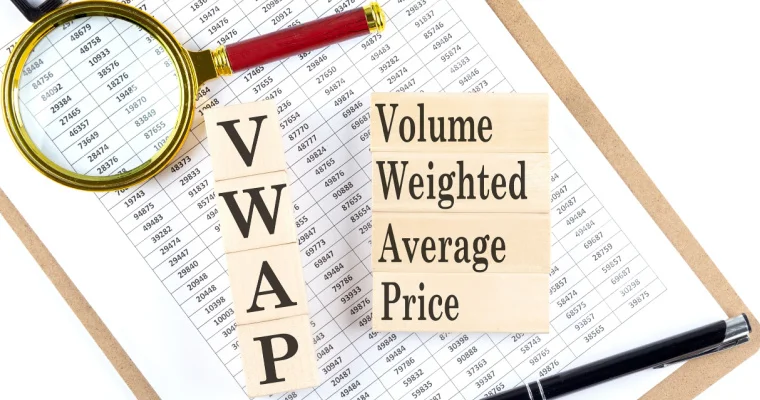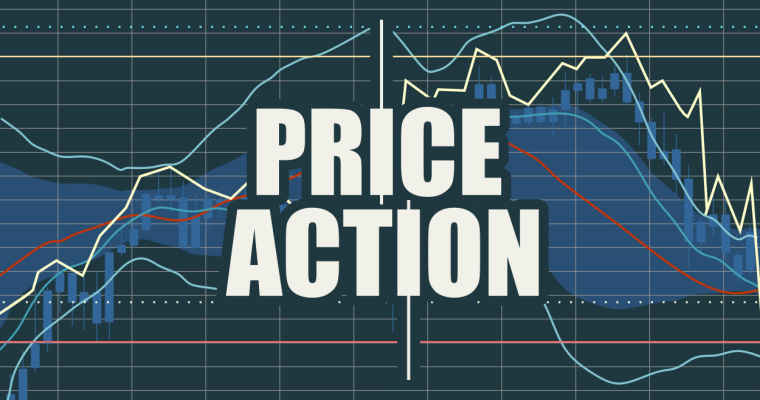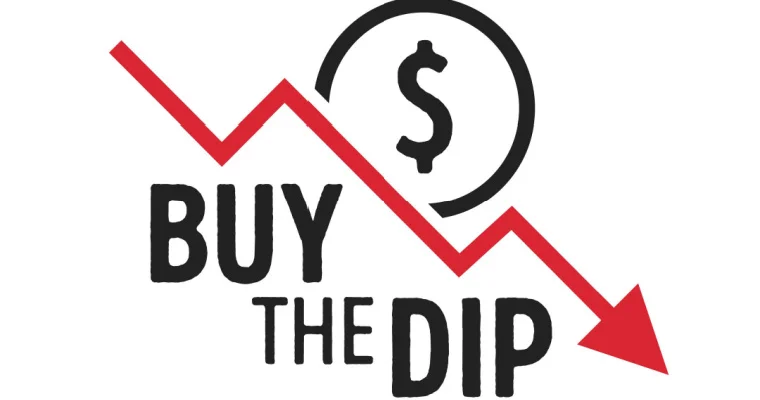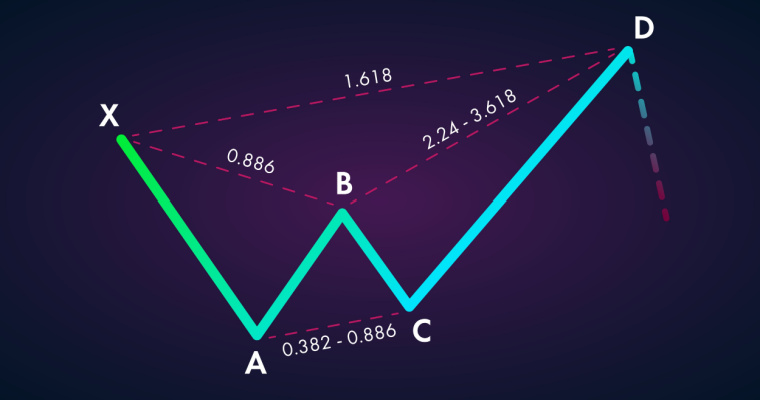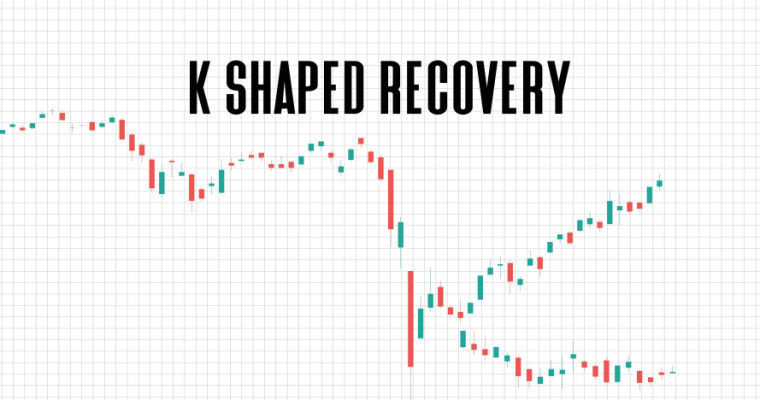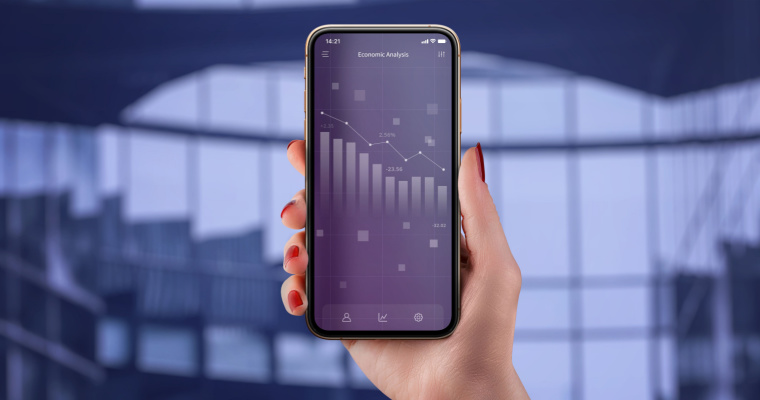Backtesting – Its Importance and Rules in Trading Strategy
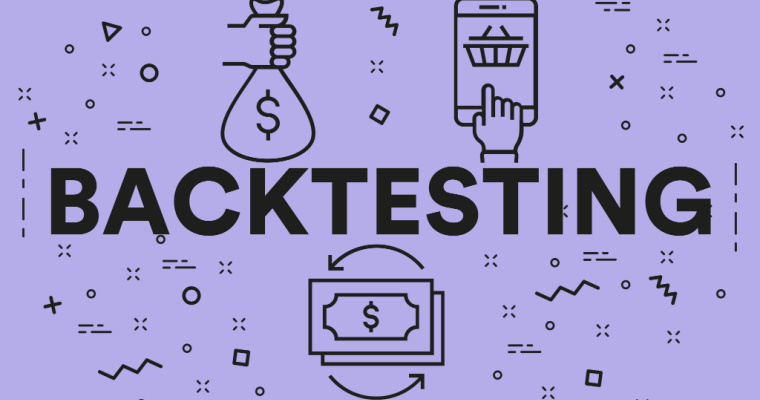
Backtesting is one of the best strategies in trading to mitigate risk and determine whether a trading strategy you’re considering using has a good chance of earning a profit.
The fast-paced idea of buying and selling positions in the market is exciting and can earn you a lot of money whether you’re day trading, swing trading, or using any other trading strategy in the financial market. Having said that, losses may also result from it. This is where implementing backtesting strategy helps.
If you’re considering having a proper trading strategy as a part of your trading gameThis blog talks all about backtesting, its benefits, rules, common measures and limitations.
What is Backtesting?
Backtesting is the process of using historic data to test the accuracy of a strategy or predictive model. It can be used to test and compare the effectiveness of trading strategies so that traders can use and improve effective strategies. Net profit or loss, return, risk-adjusted return, market exposure, and volatility are typical backtesting metrics. The underlying theory holds that any strategy that performed well in the past is likely to perform well in the future, and vice versa.
Why is Backtesting Important?
Trading is the process of taking advantage of market volatility to make money, which makes it a very risky endeavour. Strategies are but a product of the human mind, hence the scope of human error cannot be ignored. There is only little one can do while making predictions and basing trade strategies on that.
To choose the right trading strategy, one must make their decision after carefully considering the market conditions and using real market data to determine if the strategy will be effective enough.
While trading simulators can be a good choice for this, gathering data under those might take days, weeks, or months even and if the test happens to fail, more time will be wasted.
The majority of this work can be done for you by backtesting, which tests your strategy over a long enough time frame to account for a variety of market conditions and trading scenarios, and that too in a very short time. One can use backtesting trading strategies free via certain softwares to gain a better understanding of it.
Also Read
How Does Backtesting Work?
Stock backtesting gives analysts a risk-free way to test and compare different trading strategies. According to the theory, their strategy is unlikely to succeed in the future if it performed poorly in the past (and vice versa). The overall profitability and the level of risk taken are the two main factors that are examined during testing.
However, a backtest will examine how a strategy performed in relation to numerous variables. A successful backtest will present traders with a strategy that has a history of producing profitable results. Backtesting trading strategies are predicated on the notion that stock movements will be consistent with historical trends, despite the fact that the market never behaves in the same way.
How to Backtest Your Trading Strategy?
The following steps can be followed to backtest one’s trading strategy:
1. Select a Backtesting Provider
Online backtesting tools come in a variety. Some are offered for free, while others are included in monthly subscription services that frequently offer a variety of trading tools. Research a few options backtesting and compare them. Think about the following as you compare:
2. Cost Involved
Your trading equipment shouldn’t be so pricey that it’s nearly impossible to make a profit. Always weigh the cost of tools against the overall benefit they offer before purchasing them.
3. Customisation
You can backtest pre-built strategies in some programmes. They might let you alter the parameters of their own strategies, but that’s pretty much the extent of their customization. Others let you create your own strategies from scratch, completely customising each element. The pre-built options may be appealing if you are new to trading, but if you are experienced, a highly customisable option is better for you.
4. Data supplied
The point of value for these programmes is the data offered in the test results. Some only offer bare-bones details regarding your profit or loss, maximum drawdown, and other fundamental elements. Other applications dig deeply into the data, providing granular insights that show you where to adjust your strategies in the event that the test proves ineffective.
5. AI Integration
To assist you in perfecting your strategy, some backtesting services combine conventional backtests with artificial intelligence. These programs explain where small adjustments have the biggest effects and often walk you through the process of making those adjustments.
6. Finish Set-up and Run the Test for the First Time
The majority of backtesting tools on the market right now are simple to use, but vary from one another. To set up and run your first test, follow the instructions in the program you selected.
Fill out the fields for entries, exits, stop-losses, traded assets, and the length of time you want to run the test. It’s crucial to select your testing window carefully when you’re setting it up. Longer time periods require more effort and take longer to complete, but the wait is worthwhile. It is best to make sure that the time frame you select is extensive enough to cover a range of market situations and trading scenarios.
7. Result Analysis
When performing a backtest, the first thing you want to determine is whether the strategy was profitable. Determine whether there is anything you can change to reduce the risk the strategy exposes you to while maintaining or improving returns by looking at the maximum drawdown and other risk metrics.
8. Modify Your Approach
Make minor adjustments to your strategy in light of the results of the backtesting, then rerun the test. This assists you in determining whether you can make any improvements. Use an artificial intelligence-driven platform, follow the instructions, and observe how the program’s suggestions perform in practice.
Common Measures of Backtesting
Following are some of the universal backtesting statistics:
- Net Gain/Loss
- Market Exposure: The amount of exposure to various market segments
- Volatility: The dispersion of portfolio returns
- Return: The portfolio’s overall return over a specified time period
- Risk-Adjusted Return: The portfolio’s return that has been adjusted for a level of risk.
Rules for Backtesting Trading Strategy
Here are 10 golden rules of effective backtesting strategy:
- Consider the overall market trends at the time a particular strategy was tested. A strategy might not perform well in a bear market, for instance, if it was only backtested from 1999 to 2000. Backtesting over a long time frame that includes a variety of market conditions is frequently a good idea.
- Consider the environment in which backtesting took place. A broad market system might not perform well in various industries, for instance, if it is tested on a universe of tech stocks. A general rule of thumb is to keep a large universe for testing purposes unless a strategy is specifically targeted toward a certain genre of stock.
- It’s crucial to take volatility measures into account when creating a trading system. This is particularly true for accounts with leverage, which are subject to margin calls if their equity falls below a certain threshold. To minimise risk and make it simpler to enter and exit a particular stock, traders should work to keep volatility low.
- When creating a trading system, it’s also crucial to keep an eye on the average number of bars held. Although commission costs are typically factored into the final calculations by most backtesting software, this does not mean you should disregard this fact. If at all possible, increasing the average number of bars you hold can lower commission expenses and boost your overall return.
- Increased exposure can result in greater gains or losses, whereas decreased exposure results in smaller gains or losses. Generally speaking, it is a good idea to keep exposure below 70% to lower risk and make it simpler to enter and exit a particular stock.
- Using the average-gain/loss statistic alongside the wins-to-losses ratio can be helpful for figuring out the best position sizing and money management by employing techniques like the Kelly criterion. By increasing their average gains and their wins-to-losses ratio, traders can take on larger positions and pay lower commissions.
- Annualised return is used as a way to compare a system’s returns to those of other investment venues. It is crucial to consider the increased or decreased risk in addition to the annualised return as a whole. The risk-adjusted return, which takes into account different risk factors, can be used to accomplish this. A trading system must outperform all other investment venues at equal or lower risk before it is adopted.
- Customisation of backtesting is crucial. Commission amounts, round (or fractional) lot sizes, tick sizes, margin needs, interest rates, slippage assumptions, position-sizing rules, same-bar exit rules, (trailing) stop settings, and many other parameters can be entered into many backtesting applications.
- Over-optimization is a problem that can arise from backtesting. Performance results are tuned so closely to the past in this circumstance that they are no longer accurate in the future. Implementing rules that are applicable to all stocks or a specific group of targeted stocks is generally a good idea, provided that the rules are not optimised to the point where the creator can no longer understand them.
- Backtesting is not always the most precise method of determining a trading system’s performance. Sometimes tactics that worked well in the past don’t work well today. Future outcomes cannot be predicted based on past performance. Before going live, make sure to paper trade a system that has been successfully backtested to see whether the strategy still holds relevance.
Example of Backtesting
In this example, we will use the moving average in order to backtest. A moving average is an average value for the specified data field (e.g. price) over a specified number of consecutive periods. The average of the data is calculated by dropping the oldest value and adding the most recent as new data becomes available.
The trading logic is very straightforward and is as follows:
- We purchase the security when the short-term moving average (50-day crossover) rises above the long-term moving average (200-day crossover). This is known as the golden crossover
- We sell when the short-term moving average dips beneath the long-term average. This is known as the death cross.
Benefits of Backtesting
- You can quickly and without risking any money test a variety of different trading strategies.
- It helps make strategies that are customised to your unique preference for risk versus reward and modify them as necessary.
- Backtesting’s test, optimise, and re-test cycle enables ongoing fine-tuning of any strategy you believe could lead to favourable outcomes.
Limitations of Backtesting
While backtesting is important, it isn’t free of limitations. Following are a few limitations this faces:
- The risk of over-optimization is one of the significant limitations. This occurs when an investor makes excessive adjustments to a strategy’s parameters in an effort to maximise profits based on the available historical data.
- Backtesting also undervalues the influence of other significant factors, such as luck, which can significantly skew the results in either direction and produce unreliable results.
- Past is past, and not always does history repeat itself. As a result, the strategy that has been developed to make profits during the backtesting period could turn out to be largely ineffective during regular trading conditions.
Backtesting vs Scenario Analysis vs Forward Performance
Backtesting is a different method for evaluating a trading strategy’s effectiveness than scenario analysis and the forward performance approach. For instance, market prices will be impacted if the UK is about to go into lockdown mode in response to another Covid-19 outbreak. It’s helpful to look at past performance data for specific industries and profitable trading methods.
In contrast, scenario analysis compares a strategy to a set of hypothetical market conditions that may not be present in historical datasets. For instance, you could run a simulation to see how a portfolio of stocks in the healthcare sector would fare under a specific trading plan if the Covid-19 regulations persisted for a longer period of time. It would be necessary to take into account a number of important factors, such as changes in interest rates and inflation.
Forward performance testing, also known as “paper trading,” is the process of adapting a trading strategy to the present-day market environment without putting your money at risk. Clients test their strategies in writing rather than live on the trading platform, speculating on the precise entry and exit points under specific circumstances and recording the outcomes.
Also Read
Things to Look Out for in Backtesting
When you backtest your trading strategies, you want to get the most out of the data you produce. Following are a few things to consider while backtesting:
1. Always Check your Findings
Backtesters make predictions about a strategy’s potential future performance based on its past performance. It’s not always possible to predict the future by looking at the past. In the current market, you should always use a trading simulator to verify the outcomes of a backtest.
2. The Difference is Made by the Software
There are many choices for trading software that allows for backtesting. Make sure to select a program that offers thorough data; AI-assisted options are advantageous.
3. Be Mindful of Risk Metrics
Despite the excellent test results in terms of returns, it’s critical to reduce your risk. When reviewing your results, pay close attention to the Sharpe ratio, maximum drawdown, and win/loss ratio to make sure you’re not taking on excessive risk when you trade.
Final Word
Backtesting is regarded as a crucial tool in a trader’s toolkit and they wouldn’t even consider putting money at risk in the financial markets without backtesting. Consider this: before purchasing anything, be it a car or a phone, you would want to research the brand’s history, its features, etc.
FAQs
Ans. As your trading sample expands, your margin for error decreases. It is advisable to at least backtest 200 trades. By backtesting more trades, you can gather a sufficient sample size to determine whether the strategy’s performance was consistent or just a coincidence.
Ans. The margin for error decreases as the testing time period lengthens, just like it does with the number of trades. In order to build more reliable data, you should aim for the minimum time frame of about 60 days, up to a 180-day test.
Ans. No product fits all needs and therefore this depends from trader to trader. There are, however, some backtest option strategy softwares that have emerged as superior to others. Edgewonk, MetaTrader 4, and TD Ameritrade’s thinkorswim trading platform are a few among these.
Want to put your savings into action and kick-start your investment journey 💸 But don’t have time to do research? Invest now with Navi Nifty 50 Index Fund, sit back, and earn from the top 50 companies.
Disclaimer: Mutual Fund investments are subject to market risks, read all scheme-related documents carefully.
This article has been prepared on the basis of internal data, publicly available information and other sources believed to be reliable. The information contained in this article is for general purposes only and not a complete disclosure of every material fact. It should not be construed as investment advice to any party. The article does not warrant the completeness or accuracy of the information and disclaims all liabilities, losses and damages arising out of the use of this information. Readers shall be fully liable/responsible for any decision taken on the basis of this article.

Customer’s Feedback
No comments found.Illiquid Stocks Guide: Definition, Examples, and its Working
Illiquid stocks are part of a long-term investment strategy that is appropriate for investors who a... Read More »What is Shooting Star Candlestick Pattern in Trading?
The shooting star candlestick pattern is considered to be a bearish reversal candlestick ... Read More »What is VWAP Indicator and How to Use it for Trading
The VWAP indicator shows the volume-weighted average market price of a particular stock. You can us... Read More »What is Price Action Trading: Its Strategy, Stop Loss and Profit Targets
Price action trading is a methodology in which the trader solely relies on analysing a security’s... Read More »What is Buy the Dip Strategy in Trading – Working and Example
‘Buy the dip’ is one of the most common phrases in the stock market. It is sort of a go-t... Read More »What is the Black Scholes Model – Formula, Calculation and Assumptions
Among the important concepts in modern financial theory, the Black Scholes model, developed in 1973... Read More »What is Iron Condor and What are its Strategies?
Iron Condor is an options trading strategy that involves four options with the same expiration date... Read More »What is Harmonic Pattern and How Does it Help in Trading?
Harmonic patterns are one of the most efficient and effective trading patterns. Although they are m... Read More »What is a Contract Note and Why is it Important?
Contract note is a legal document containing the details of every stockbroker's trade on a stock ex... Read More »What is K-shaped Recovery: Indication, Example and
Economies go through multiple phases in business cycles. One such phase is a recession which is mar... Read More »Guide to Book Building – Its Types, Benefits and Process
Initial public offerings (IPOs) are priced as specified by their underwriters. The process by which... Read More »Support and Resistance in Trading: Working, Strategies, Uses and Example
Support and resistance are two of the most significant and practical concepts in technical analysis... Read More »Top 10 Chit Fund Schemes in India in 2023
Chit funds are one of the most popular return-generating saving schemes in India. It is a financial... Read More »10 Best Gold ETFs in India to Invest in April 2023
Gold ETFs or Gold Exchange Traded Funds are passively managed funds that track the price of physica... Read More »10 Best Demat Accounts in India for Beginners in 2023
Creation of Demat accounts revolutionised the way trades were conducted at the stock exchanges. It... Read More »20 Best Index Funds to Invest in India in April 2023
What is an Index Fund? An index fund is a type of mutual fund or exchange-traded fund (ETF) that... Read More »Best Arbitrage Mutual Funds to Invest in India in April 2023
Arbitrage funds are hybrid mutual fund schemes that aim to make low-risk profits by buying and sell... Read More »10 Best SIP Plans in India to Invest in April 2023
What is SIP? SIP or Systematic Investment Plan is a method of investing a fixed amount in ... Read More »10 Best Corporate Bond Funds in India to Invest in April 2023
Corporate bond funds are debt funds that invest at least 80% of the investment corpus in companies ... Read More »10 Best Bank for Savings Account in India [Highest Interest Rate 2023]
Savings account is a type of financial instrument offered by several banks. It lets you safely depo... Read More »
















